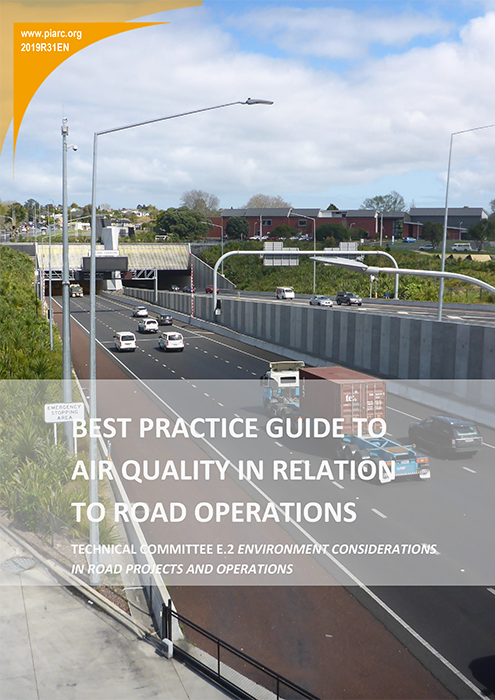Best Practice Guide to Air Quality in Relation to Road Operations - Technical Report

Air pollution linked to road transport has received significant political, media and public attention since the mid 2010s. However, despite improvements in vehicle efficiencies over past decades, emissions from vehicles still contribute significantly to concentrations of air pollutants above standards in many cities around the world.
The European Environmental Agency noted that: Road transport remains an important source of some of the most harmful air pollutants. In particular, road transport is responsible for significant contributions to emissions of nitrogen oxides and particulate matter. Pollution released by vehicles is particularly important, as emissions generally occur in areas where people live and work, such as cities and towns. Therefore, although emissions from the transport sector may not be as great in absolute terms as those from other sources, population exposure to the pollutants released by road transport can be higher than for sources such as power plants or large industrial facilities, which often tend to be located in remoter, less populated areas.
With road transport being a significant contributor to air pollution, transport policies and systems have a key role to play in reducing the impact from transport, with road agency engineers and policy officials being central to influencing future road transport outcomes.
Air quality solutions will rely on a combination of technological solutions, behavioural change and reimagined urban places. The potential impact of disruptive technologies and/or paradigm shifts in societal behaviours (such as autonomous vehicles or a movement to a shared-asset model linked to car ownership), could create opportunities and create interlinkages between environmental, economic, transport and health sectors, to reduce air pollution and improve environmental, social and economic outputs while reducing health burdens to society.
The opportunity to reduce air pollution within the increasingly urbanised environment, will rely on robust, dynamic and ambitious decision making by politicians, planners and/or regulators. In this regard, air pollution mitigation should not solely rest or rely on the delivery of hard infrastructure to solve a problem that already exists; but instead, learning from historical unintended planning mistakes, seek to avoid issues through smart planning decisions.
Information sheet
- Date: 2019
- Author(s): Comité technique / Technical Committee / Comité Técnico E.2 Prise en compte de l'environnement dans les projets routiers et l'exploitation / Environment Considerations in Road Projects and Operations / Consideraciones Medioambientales en Proyectos y Explotación de Carreteras
- Domain(s): Road Policies / Environment / Road Network Operations
- Type: Technical Report
- PIARC Ref.: 2019R31EN
- ISBN: 978-2-84060-566-9
- Number of pages: 171